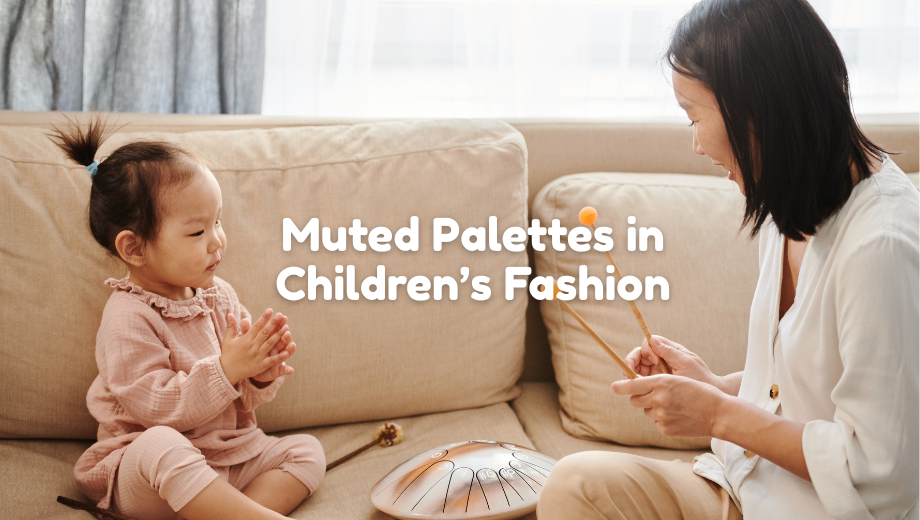The children’s fashion industry now uses neutral and muted color palettes instead of bright prints which appeal to parents across the world. The understated color tones are practical and timeless making them simple to add to any wardrobe. Children who wear oatmeal, sand, misty blue or sage colors in everyday life blend naturally with their surroundings while their individual personalities remain visible. These color combinations help families concentrate on their child instead of their clothing while designers and stylists highlight how these palettes create instant matching effects. Collections like HuxBaby clothing showcase this fashion direction in their collections. The brand designs its clothing items with basic patterns and gentle materials which deliver comfort while maintaining fashion appeal. Parents can now build adaptable capsule collections for their children that adapt to their growth and changing tastes.
Practical Appeal in Everyday Life
Parents choose neutral wardrobes because they simplify outfit selection and promote teamwork. The neutral color scheme of creamy whites, warm grays, soft olives and taupes enables parents to mix and match different tops and bottoms. The practicality of these wardrobes makes them suitable for big families because they do not follow age or trend restrictions which helps extend the usage of each clothing item. The neutral color scheme enables children to express their personal style through fun accessories and seasonal layers.
Supporting Healthy Development
The color schemes used in children’s environments directly affect their emotional responses and their social interactions with their surroundings. The combination of neutral tones such as beige, off-white and pastels produces a calming environment but excessive visual stimulation causes distraction and stress. The use of muted colors encourages concentration and an easy-going environment which is good for overall well-being. Neutrally hued garments allow children to transition with ease from one routine and activity to another. Teachers have noted students wearing non-distacting colors to demonstrate increased concentration on their work as well as on their classmates.
Gender-Neutral Fashion for Today’s Families
Muted color palettes offer substantial benefits when it comes to fighting outdated gender norms. The color selection process becomes easier for families because they can pick any color that works for all their children regardless of their identity or personal choices. The flexible approach enables families to share clothing leading to a decrease in overall consumption. Children understand fashion as something that can be adapted which motivates them to try new things and build their personal style. Parents find gender-neutral clothing appealing because it matches their family values which emphasize both personal expression and functional simplicity.
Longevity and Sustainability
The use of neutral and muted colors in homes supports sustainability because they choose permanent color schemes. The selection of these colors stops fast fashion trends from dominating so a small set of permanent colors remains throughout all life stages. The approach safeguards the environment through material preservation and reduces unnecessary waste and clutter. Neutral closets enable families to develop stronger bonds with their valuable clothing items because they choose to buy quality clothing instead of cheap alternatives.
Muted Palettes in the Global Spotlight
The Australian suburban family fashion and Scandinavian minimalist children’s boutiques pioneered the international trend towards muted and neutral color palettes. Soft colors have been the center of style capitals and internet social networking. The sociocultural trend towards mindfulness and minimalism accentuated comfort, individuality and convenience. Incorporating muted colors as part of the interior, learning areas, play areas and residences creates a serene environment, and dressing children and their caregivers becomes less stressful.
Styling Tips for a Muted Wardrobe
- The combination of different textures and layers including a soft knit sweater with light linen shorts creates visual appeal without creating sensory overload.
- The addition of delicate prints or minimal embroidery with tiny dots or understated animal motifs allows personality to show through delicately.
- Select clothing with mobility and comfort as priorities such as slack-fit pants, oversized T-shirts and comfortable-wearing rompers that are convenient and child-friendly.
- Complete ensembles with minimal accessories: a mustard hat, pale grays or taupe shoes could add warmth without dominating the coloration.
- The foundation of day-to-day essentials must be rotated with periodic updates to ensure an achievable, cohesive and sustainable wardrobe with growing children.




